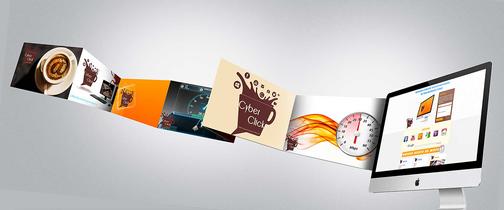Banner Ad Advertising: A Complete Guide to Effective Online Campaigns
Banner Ad Advertising: A Complete Guide to Effective Online Campaigns
Blog Article
Banner ads have been a cornerstone of internet advertising since the early days of the internet. Despite the rise of newer ad formats, banner advertising remain an effective tool for driving brand awareness, traffic, and conversions. In this article, we’ll explore banner ad is, its benefits, guidelines, and ways to create campaigns that deliver results.
What Are Banner Ads?
Banner ads are graphical advertisements displayed on websites, apps, or social media marketing platforms. They typically appear at the pinnacle, bottom, or sides of a webpage and are available in various sizes and formats, including:
Static Banners: Simple image-based ads.
Animated Banners: Ads with motion graphics or GIFs.
Interactive Banners: Ads that enable user interaction, like quizzes or games.
Video Banners: Ads offering video content.
Banner ads are often sold on a cost-per-thousand-impressions (CPM) or cost-per-click (CPC) basis.
Why Use Banner Ad Advertising?
Banner ads offer several advantages for marketers:
Wide Reach: They can be displayed on an enormous network of web sites and apps.
Brand Visibility: Banner ads assist in brand awareness by upholding your brand facing your market.
Targeting Options: Advanced targeting permits you to reach specific demographics, interests, and behaviors.
Cost-Effective: Compared to other ad formats, banners can be relatively affordable.
Measurable Results: Metrics like impressions, clicks, and conversions help it become easy to track performance.
Types of Banner Ads
Display Banners: Standard ads added to websites within ad networks like Google Display Network.
Retargeting Banners: Ads that target users who have previously visited your website.
Native Banners: Ads designed to blend seamlessly with the content of the website.
Social Media Banners: Ads displayed on platforms like Facebook, Instagram, and LinkedIn.
Rich Media Banners: Interactive ads with advanced features like video, audio, or animations.
Best Practices for Banner Ad Advertising
To create effective advertising campaigns, follow these guidelines:
1. Define Clear Goals
Determine what you would like to achieve (e.g., brand awareness, traffic, conversions).
Align your ad design and messaging together with your goals.
2. Know Your Audience
Use audience insights to produce ads that resonate together with your target demographic.
Leverage targeting options like location, interests, and browsing behavior.
3. Design Eye-Catching Creatives
Use bold colors, clear fonts, and high-quality visuals.
Keep the look simple and avoid clutter.
Include your logo and brand colors for consistency.
4. Write Compelling Copy
Use concise, action-oriented language.
Highlight your unique value proposition.
Include a strong call-to-action (CTA) like “Shop Now” or “Learn More.”
5. Optimize for Mobile
Ensure your banner ads are responsive and display correctly on mobile devices.
Use mobile-friendly sizes like 300x250 (Medium Rectangle) or 320x50 (Mobile Leaderboard).
6. Test Different Formats
Experiment with static, animated, and interactive banners to see what works best.
A/B test different designs, CTAs, and messaging.
7. Use Retargeting
Re-engage users who have previously visited your web site or shown desire for your products.
Show personalized ads determined by their browsing behavior.
8. Monitor and Optimize
Track key metrics like CTR, conversion rate, and ROI.
Use analytics tools to distinguish underperforming ads to make improvements.
Common Banner Ad Sizes
The Interactive Advertising Bureau (IAB) recommends the following standard sizes:
Leaderboard (728x90): Ideal for the top of your webpage.
Medium Rectangle (300x250): Fits well within content.
Large Rectangle (336x280): Great for sidebars or within articles.
Skyscraper (160x600): Perfect for vertical spaces.
Mobile Leaderboard (320x50): Designed for cellular devices.
Tools for Creating and Managing Banner Ads
Canva: A user-friendly tool for designing banner ad campaigns.
Adobe Spark: Offers templates and design tools for creating professional-looking ads.
Google Web Designer: A free tool for creating HTML5 banner advertising.
Bannersnack: A platform for designing and animating banner advertising.
AdRoll: A retargeting platform that can help manage and optimize banner ad campaigns.
Challenges of Banner Ad Advertising
While banner ads are effective, they support some challenges:
Banner Blindness: Users often ignore banners due to overexposure.
Ad Blockers: Many users install ad blockers in order to avoid seeing ads.
Limited Space: Banner ads have short space to convey your message.
Competition: High competition can increase costs and lower visibility.
How to Overcome Banner Ad Challenges
Focus on Relevance: Create ads that are highly relevant to your target market.
Use Retargeting: Reach users who will be already familiar along with your brand.
Leverage Rich Media: Use interactive or video ads to capture attention.
Optimize for Performance: Continuously make sure refine your ads to enhance results.
Combine with Other Strategies: Use banner ads as part of a broader marketing mix, including SEO, social websites, and marketing with email.
Banner ad advertising remains a very important tool for marketers seeking to increase brand visibility, drive traffic, and generate conversions. By following best practices, leveraging the right tools, and continuously optimizing your campaigns, you can create banners that be noticeable and deliver results.
Whether you’re a small company or a large enterprise, banner ads offer a cost-effective way to reach your target market and achieve your marketing goals. Start designing your your banner campaign today watching your online presence grow!